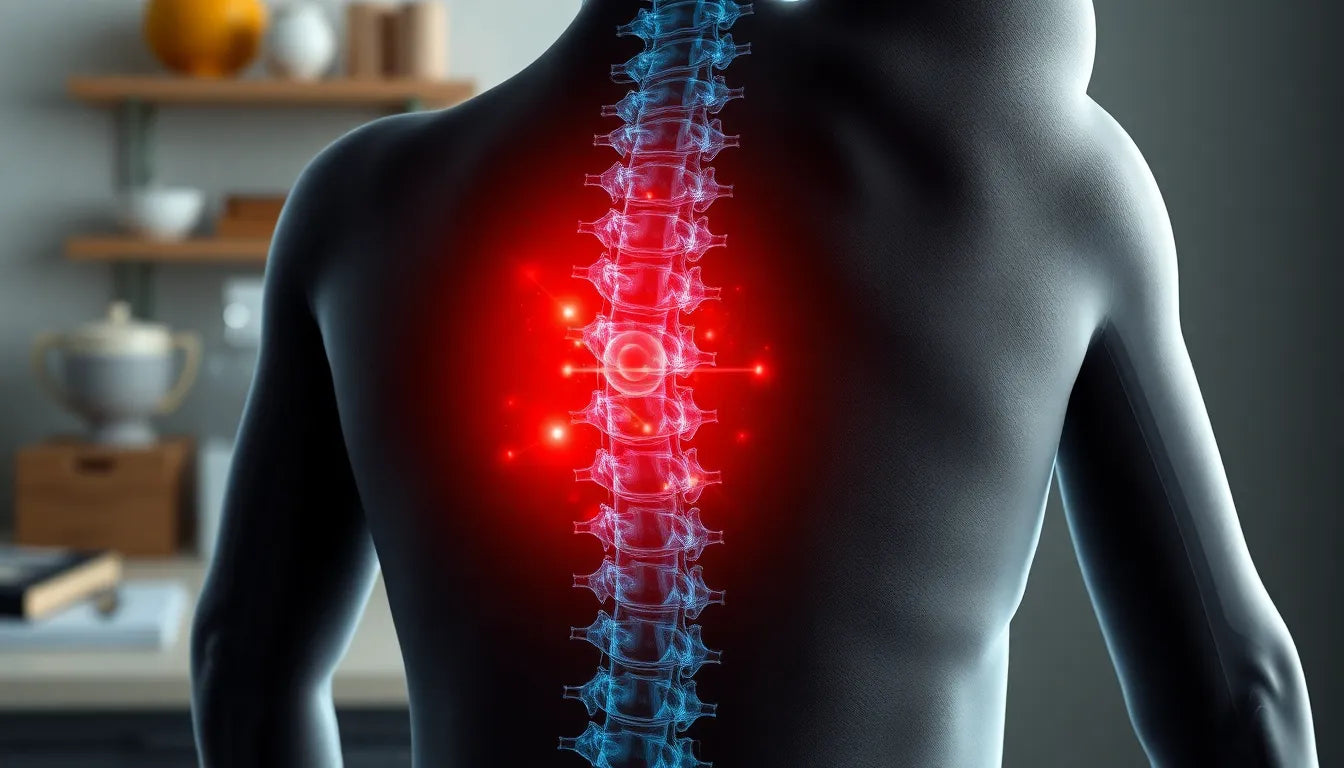Imagine waking up each morning with a persistent pain that runs from your lower back down to your leg, making even the simplest tasks seem daunting. This scenario is a daily reality for millions worldwide who suffer from sciatica, a condition that not only disrupts daily activities but also significantly affects quality of sleep and overall well-being.
understanding sciatica pain
Sciatica is characterized by pain that results from irritation or compression of the sciatic nerve, the longest nerve in the body. This nerve runs from the lower back through the hips and buttocks and down each leg. Typically, sciatica pain radiates from the lower back down one leg, often accompanied by tingling, numbness, or weakness. Common causes include herniated discs, spinal stenosis, or piriformis syndrome, each leading to varying degrees of discomfort and mobility challenges.
purpose of this guide
This guide is designed to be a comprehensive resource for those seeking to understand sciatica pain and explore various treatment options. It delves into both medical and lifestyle approaches, offering a dual focus that aims to provide effective relief. Whether you're dealing with mild discomfort or severe pain, understanding your condition and knowing the available treatments can empower you to take proactive steps towards recovery.
As you navigate through this guide, you will find detailed insights into the anatomy of the sciatic nerve, common diagnostic methods, and an array of treatment options ranging from conservative approaches to advanced medical interventions. Additionally, practical lifestyle advice will be provided to help you make daily adjustments that can significantly reduce discomfort and improve your quality of life.
medical insights into sciatica pain
Understanding the intricate details of the sciatic nerve's anatomy is crucial for grasping why sciatica can be so debilitating. The sciatic nerve, the largest in the body, originates in the lower spine and travels through the pelvis and buttocks, extending down the back of each leg. When this nerve is compressed or irritated, it can lead to the characteristic pain, tingling, or numbness associated with sciatica. Diagnostic methods such as physical exams, MRI, CT scans, and electromyography (EMG) tests are often employed to pinpoint the exact cause and location of nerve involvement, ensuring a targeted treatment approach.
conservative treatment options for sciatica
For most individuals, the journey to relief from sciatica begins with conservative treatment options. Rest and activity modification are often the first steps, allowing the body to heal naturally while avoiding activities that exacerbate the pain. Non-steroidal anti-inflammatory drugs (NSAIDs) are commonly prescribed to reduce inflammation and alleviate pain. Additionally, physiotherapy plays a pivotal role in the conservative management of sciatica, focusing on exercises that enhance mobility, strengthen muscles, and improve overall posture.
advanced medical treatments for severe sciatica
In cases where conservative treatments do not provide sufficient relief, advanced medical options may be considered. Medications such as corticosteroids, antidepressants, and anticonvulsants are sometimes used to manage severe pain and inflammation. Corticosteroid injections can offer targeted pain relief by reducing inflammation around the irritated nerve root, often providing significant short-term relief.
lifestyle adjustments to alleviate sciatica pain
Alongside medical treatments, lifestyle adjustments can play a significant role in managing and reducing sciatica pain. Simple changes in daily routines can help minimize discomfort. For instance, adopting optimal sleeping positions, such as side sleeping with a pillow between the legs, can align the spine and reduce nerve pressure. Investing in supportive mattresses and pillows can also make a significant difference in comfort levels.
stress management and its impact on sciatica
Stress can amplify pain perception, making effective stress management an essential component of sciatica treatment. Techniques such as mindfulness, meditation, and gentle yoga can help reduce stress levels and, consequently, pain intensity. These practices not only promote relaxation but also encourage a more positive outlook, aiding in overall pain management.
importance of ergonomics and posture
Maintaining proper posture and ergonomics in everyday activities is crucial for individuals with sciatica. Ensuring that workstations are ergonomically sound and that posture is consistently monitored can help reduce strain on the back and legs. Simple adjustments, such as using a chair with good lumbar support or positioning computer screens at eye level, can prevent unnecessary stress on the spine.
By integrating these medical insights and lifestyle adjustments, individuals suffering from sciatica can take proactive steps toward relief. Understanding the condition and making informed choices about treatment options can significantly improve quality of life and reduce the impact of sciatica on daily activities.
rehabilitation and physical therapy for sciatica
Physical therapy is a cornerstone in the long-term management of sciatica pain. It provides not only immediate relief but also equips individuals with the tools necessary to prevent future episodes. A well-structured physical therapy program focuses on strengthening core muscles, which are crucial for supporting the spine and maintaining proper posture. Strengthening these muscles can significantly alleviate the pressure on the sciatic nerve, reducing pain and improving mobility.
Manual therapy techniques, such as massage and joint mobilization, are often incorporated into physical therapy sessions. These techniques help reduce muscle tension, improve circulation, and enhance flexibility. Additionally, movement education is a vital component of rehabilitation, teaching patients how to move efficiently and safely to avoid aggravating their symptoms.
interventional and surgical options for sciatica
While conservative treatments and physical therapy are effective for many, some individuals may require more advanced interventions. If sciatica pain persists beyond 6–8 weeks despite conservative management, it may be time to consider interventional procedures. Minimally invasive procedures, such as discectomy, can provide significant relief by removing the portion of a herniated disc that is pressing on the sciatic nerve. These procedures are typically performed on an outpatient basis, allowing for quick recovery times.
Surgery is generally reserved for severe cases where there is significant neurological deficit, such as loss of bladder or bowel control, or when other treatments have failed to provide relief. Surgical options aim to decompress the affected nerve, offering a long-term solution to pain and mobility issues.
frequently asked questions
What is the best sleeping position for sciatica pain?
Side sleeping with a pillow between the knees is often recommended to align the spine and reduce nerve pressure. This position helps maintain a neutral spine alignment, which can alleviate pressure on the sciatic nerve.
How long does it take for sciatica pain to go away?
Many people experience relief within 4 to 6 weeks with conservative treatment. However, chronic cases may require ongoing management and a combination of therapies to achieve significant improvement.
Can lifestyle changes really make a difference?
Yes, incorporating ergonomic adjustments, stress management, and proper posture can significantly reduce sciatica symptoms. These changes help minimize strain on the back and improve overall spinal health.
When should I see a doctor for sciatica?
Seek medical advice if pain persists beyond a few weeks, is severe, or is accompanied by neurological symptoms like numbness or weakness. Early intervention can prevent the condition from worsening.
Are there any exercises to avoid with sciatica?
High-impact activities and exercises that strain the lower back should be avoided until pain subsides. A physical therapist can provide personalized guidance on safe exercises that support recovery and strengthen the back.
By understanding the various treatment options and making informed lifestyle changes, individuals can effectively manage sciatica pain and improve their quality of life. Whether through physical therapy, lifestyle adjustments, or advanced medical procedures, relief is possible with the right approach.
Sources
- NCBI Bookshelf. "Sciatica Overview." StatPearls.
- Active Posture. "Nighttime Relief Tips for Sciatica."
- Mayo Clinic. "Sciatica: Diagnosis and Treatment."
- Cleveland Clinic. "Sciatica: Causes and Relief."
- Physio-pedia. "Sciatica Management."
- Pain Physicians NY. "Specialist Treatments and Physical Therapy for Sciatica."
- FASO. "Minimally Invasive Procedure for Sciatica Relief."


















